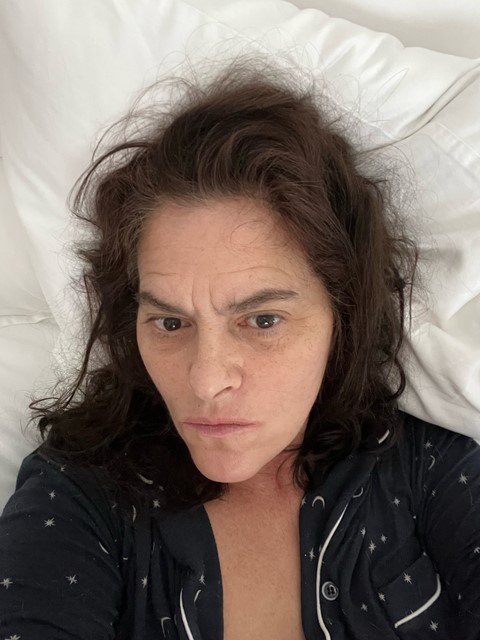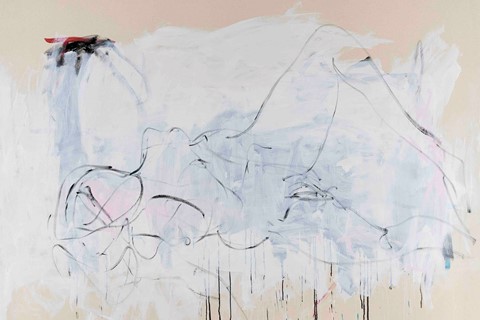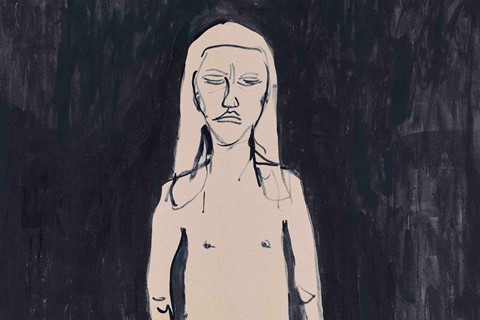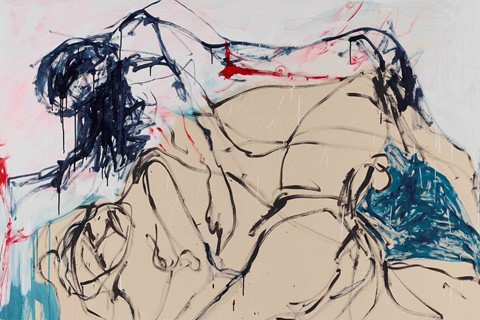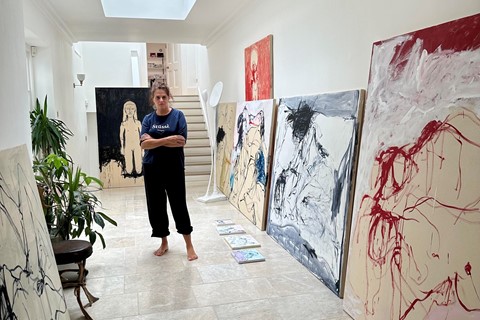Few artists feel as woven into the fabric of British contemporary art as Tracey Emin. Margate’s most famous export has been a household name ever since her modest box frame bed, with its rumpled sheets and sundry surrounding objects telegraphing despair, was exhibited as part of the 1999 Turner Prize. Whether through textiles and neons, her paintings and sculptures of beautiful bodies, videos that capture her dancing exuberantly on her own, or traversing Margate’s sands on horseback, Emin weaves narratives of love and loss that are tender and often devastating. In 2020, Emin learned she had an aggressive form of squamous cell bladder cancer, a diagnosis that changed her life and her body irrevocably. Yet with typical, ferocious candour, she has narrated her journey through illness and recovery across her work and social media.
Her new exhibition, You Should Have Saved Me at Galleria Lorcan O’Neill in Rome, presents new paintings and gouaches produced since getting the all-clear from cancer. Vivid and life-filled, yet freighted with the experience of illness, they recall the work of her heroes, Egon Schiele and Edvard Munch, with whom she has been paired in past exhibitions. During her recovery, Emin would work from bed, and beds also appear in these new pieces, tracing a line right back to her most infamous work. They also feel tied to Margate, where she has a home and studio, and recently launched a studio complex and residency programme for international artists.
Last summer, to add to her long list of accolades – Turner Prize nominee, Royal Academician, UK representative at the 2007 Venice Biennale, and CBE – she was made an Honorary Freewoman of Margate, appearing mischievous and redoubtable in the ceremonial tricorn hat and bright red robe.
Here, Tracey Emin takes time out from her busy schedule to answer AnOther’s 50 questions.

1. Where are you right now? I’m in Rome to install my new exhibition at Galleria Lorcan O’Neill.
2. Can you describe the view from your window? I see the roofs of some houses and Roman terraces.
3. What does the title of your new show, You Should Have Saved Me, mean? It means that it’s easy to blame others when you have a broken heart, but really you should have just saved yourself.
4. Some of the figures in your works appear like apparitions. Do you see ghosts? Yes. I’ve always seen ghosts. I also see myself as a ghost.
5. Who is the first person you show new work to? Harry Weller, who’s worked with me for 15 years. That’s if Teacup and Pancake (my cats) haven’t seen it first.
6. Who are your favourite people to discuss art with? David Dawson, Kenny Schachter, Carl Freedman, Harry Weller and Elissa Cray, from my artists residencies in Margate.
7. What are you listening to at the moment in the studio? Brian Eno’s Music for Airports. And a radio station with relaxing piano music.
8. When you’re working, are you an early bird or a night owl? I used to be a night owl and now I work whenever I can.
9. You recently opened artist studios in Margate, along with a residency programme. Why? Because I love art. And I really believe in art education.
10. When you’re interviewing prospective students, what’s the most important thing you need to know about them? Their motivation.
Why do you make art? “I make art because otherwise I’d die” – Tracey Emin
11. How has Margate changed since you were a girl? Apart from the architecture, it’s an unrecognisable town. 20 years ago Margate was boarded up, bleak. Apart from the sunsets it had absolutely nothing to go for. Thanks to art and the positivity of people, the regeneration has been creative and cool.
12. What is the best thing about being a Freewoman of Margate? Waiting for it all my life.
13. Has a dream recently influenced a painting? Yes, my dreams often influence my painting. At the moment I’m painting an underground crystal waterfall that’s black and silver and it’s from a dream I was swimming through. It felt electric. It felt amazing.
14. What is your first memory of a piece of art? Going to Topkapi Palace in Istanbul when I was a very little girl. I was around 3 years old, with my mum and dad.
15. What was the first piece of art you made? It was a cutout fabric flowery elephant with chain stitching around it, on a green fabric background. I still have it. I was six when I made it. It was the first thing I really remember trying to get right.
16. Why do you make art? I make art because otherwise I’d die.
17. What’s the best thing about being an artist? The art always looks after me. Loves me, cares about me and needs me.
18. What’s the worst thing about being an artist? It can be very lonely. And you can have a great feeling of failure. I found it very hard to share my art and my life with anyone.
19. Why do you think your piece Everyone I Have Ever Slept With 1963–1995 (known as ‘The Tent’) caused such a scandal? Because it forced people to think of everyone they have slept with. But it wasn’t just about sex; it was about intimacy. Who I shared a bed with.
20. Why do you think My Bed captured the imagination of the public? Because a lot of people knew it wasn’t their imagination, they knew how it felt. They related to it.
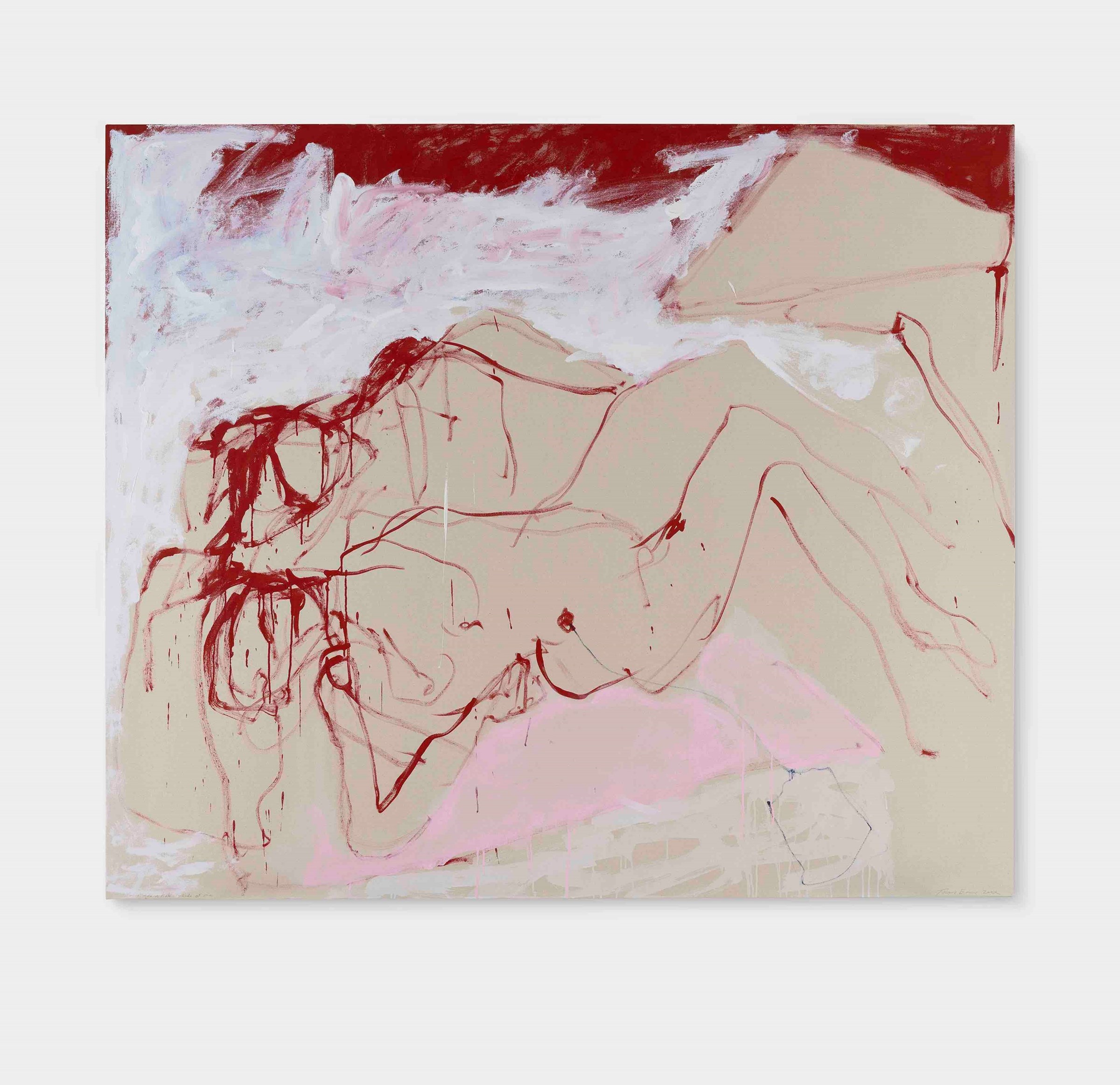
21. Art by women is slowly getting its dues. How does this shift make you feel? I don’t think it’s just art. I think women are gaining a stronger position in many positions in life. Women’s prices in art are still radically lower than men’s.
22. The late Vivienne Westwood was a dear friend of yours. How did she impact your life and what will you most miss about her? I miss the fact that Vivienne was one of the most challenging people in my life. She challenged me. Vivienne did exactly what she thought was right. She didn’t ask for permission.
23. How has your life changed since your surgery? I don’t drink alcohol anymore. I don’t go out very often. I have to wear baggy elasticated clothing, and I have to carry a giant bag of piss around with me most of the time. But strangely enough, I have never been happier.
24. How has the physicality of your practice changed since your surgery? When I am painting, it feels like I never had bladder cancer. So I feel very free and liberated, much more than I did before my surgery.
25. Munch and Schiele – who you are often paired with – dealt with illness in their work. Did they help you understand your own illness? No.
26. Is generosity and the desire to connect a necessity for great art? No. Most artists are really radically selfish. All of the negative selfish qualities are what's necessary for art.
27. Has someone or something surprised you recently? Yes, a number of things. I didn’t realise I could be physically loved so much.
28. What was the last film to make you cry? It was a clip of a film on Instagram of Mr Fox.
29. What was the last thing anyone said to make you laugh? I’d done a drawing of a woman sitting at a table, opposite a penis sitting on a chair, and a clock above the table. The hands were at quarter past 12. I was having to title work, and the titles went from ‘where the fuck have you been’ to ‘what time do you call this’. Harry and I were rolling around the floor laughing.
30. What was the last exhibition/book/film that made you want to try something new in your practice? One of the TEARS (Tracey Emin Artist Residency) artists, Emmie Nume, paints with incredibly thick oil paint, it’s something I haven’t done for years, but I’d like to use oil paint again.
What do you wish more people knew about you? “I don’t like being touched” – Tracey Emin
31. Where do you feel happiest? In Margate.
32. What is the most spiritual or holy place you know? Swimming in the sea.
33. What place does swimming hold in your life? It’s really important. If I don’t do it, I feel physically and mentally ill. But having a urostomy bag makes swimming much more difficult.
34. When did you last swim in the sea? Four days ago.
35. If you could be transported back in time, which figure from the classical world would you most like to meet? Definitely somebody ancient Egyptian. Either Nefertiti or one of the Cleopatras.
36. You once made a neon reading: “I don’t believe in Love, but I do believe in You”. Do you believe in love now? Yes. I really believe in love. At the time I made that neon, I was trying to see the good side in everybody, including myself.
37. Would you say you’re currently happy? Yes, compared to how I used to be.
38. Do you believe in life after death? 100, one million per cent. A trillion per cent.
39. Is there anything from the 1990s you wish you could come back? My bladder.
40. Do you write postcards? Yes.
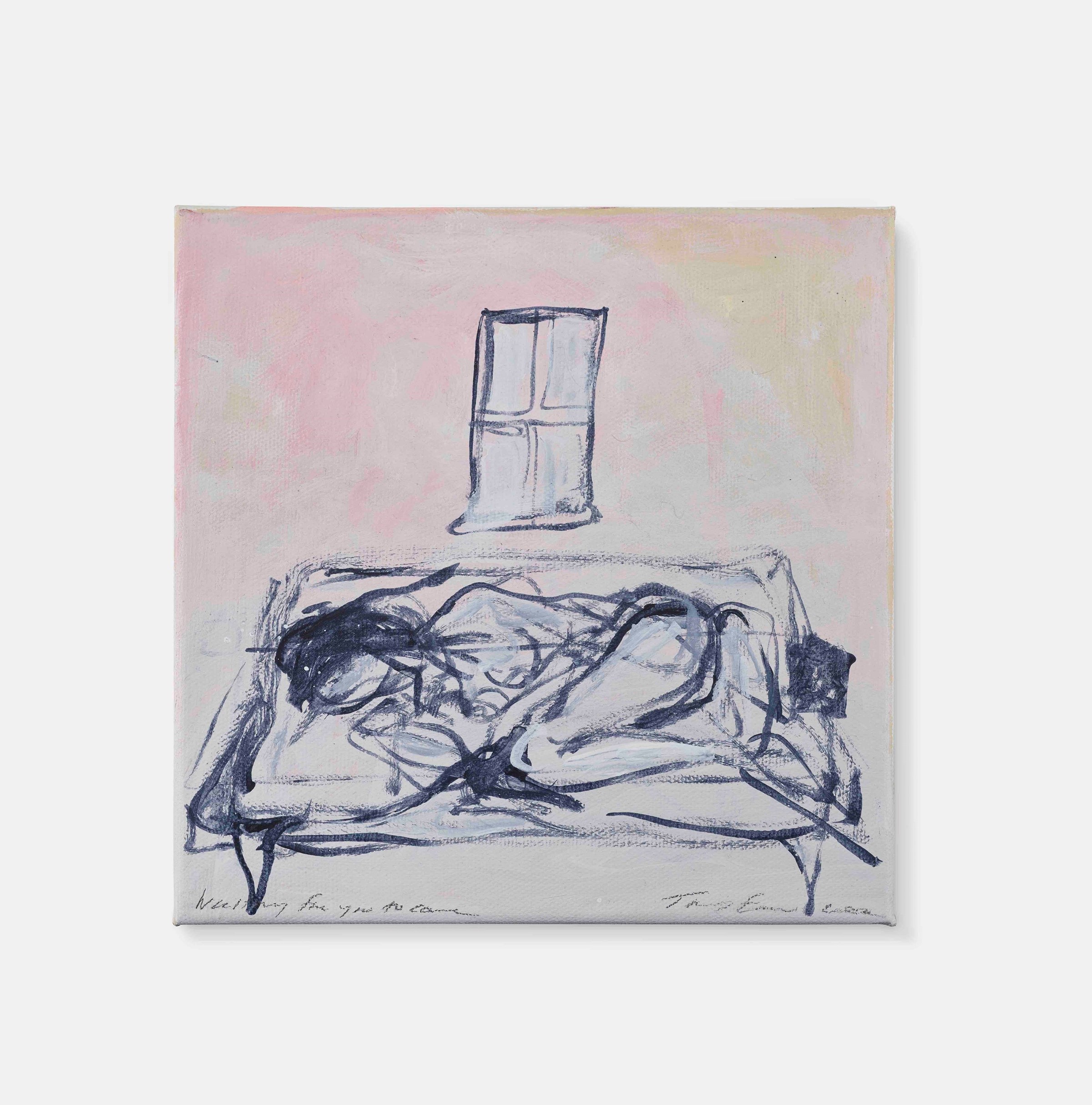
41. Do you reread your old diaries? No.
42. Where is the best spot for a nap with your cats? When I wake up in the morning in bed Teacup is all curled up around my arm and, if I am very lucky, Pancake is curled up around my feet. It’s one of the loveliest feelings in the world.
43. What did you do the last time there was a full moon? I sulked because I wasn’t painting.
44. You have a twin brother, Paul. Did you have your own language growing up? Yes. We had our own language until we went to school. I spoke a bit of Turkish and Paul spoke Greek and Turkish.
45. Do you still speak the language? As soon as we went to school it was knocked out of us.
46. Did you celebrate the coronation? I watched it on TV.
47. What might you have been if not an artist? My mum always said if I hadn’t been an artist I would have died. But right now I would have either been a writer or a property developer.
48. What do you wish more people knew about you? I don’t like being touched.
49. What’s the best piece of advice you’ve ever received? You might be able to afford the big house but can you afford to live in it?
50. Who said that? My mum. I’ve been homeless three times in my life.
You Should Have Saved Me by Tracey Emin is on show at Galleria Lorcan O’Neill in Rome until 29 July 2023.
